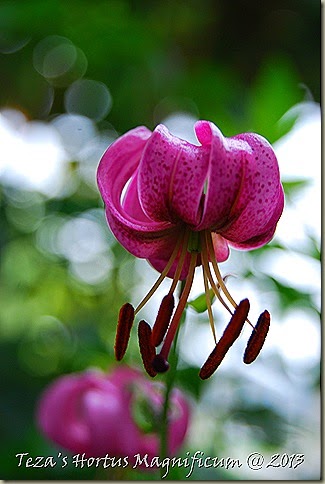
I have always held this wonderful genus as one of my favourites, and after recently completing a Power point presentation on them at a friend’s behest, I can honestly say that I find them even more attractive!
The fact that they are one of the few plants brave enough to push forth through the semi frozen soil, thrusting forward through the snow is merit enough to add a few to the garden repertoire.
Hellebores come close to being the perfect perennial, with their long lasting, exquisitely shaped flowers, handsome, often evergreen foliage, hardiness, durability, and tolerance of shade, they offer almost every quality a gardener could wish for.
Helleborus niger [left] is often referred to as the Christmas rose, and is known as such due to folklore that mentions a young shepherd who had nothing to offer to the Christ child. Heartbroken, he began to cry, tears streaming down his youthful face. As the tears plashed from his cheeks and landed on the ground, they were immediately transformed into gorgeous, pristine white, rose shaped flowers!
Endemic to the mountainous regions of Europe, in specific the Balkan regions of the former Yugoslavia, they are typically found residing in open oak and beech woodlands, scrub, rocky meadows and grassy slopes.
Flowers are made up of five petal-like sepals, which surround up to 32 subtle nectaries that form an inner ring. The centre of the flower is typically comprised of 2-10 pistils , surrounded by multiple rings of stamen. Double flowers, known as ‘doubling’ occurs when the nectaries become petaloid, instead of their typical uniquely tubular shape.
Sexually speaking, Helleborus is protogynus, meaning that the stigmas are receptive before the stamens in the same flower when it sheds its pollen. This adaptation usually keeps a flower from self fertilization and encourages cross-fertilization. Flowers are borne in clusters at the tip of persistent stems, or on scapes with leafy-like bracts, singly or sometimes doubly.
The seed of Helleborus are contained within the clusters of dried follicles that are surrounded by persistent sepals. When the follicle splits [typically along an inward facing seam] the seed is released. Most are ovoid in shade, and somewhat flattened on two sides, allowing them to stack against one another easily. Ants, attracted by a pheromone emitted from the seed, collect the seeds and disperse them farther afield of the parent plant to reduce future competition.
Helleborus with persistent, aboveground stems are referred to as being caulescent, while those with underground stems, representative by a rhizome are referred to as acaulescent, of which most species are categorized. With their succulent nature, caulescent types are less hardier than their counterparts, yet in my eyes, sadly, they represent the most beautiful within the genus.
** Stay Tuned: HelleBORING Part Two: Cultivation and the Helleborganza Parade!






































No comments:
Post a Comment